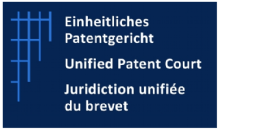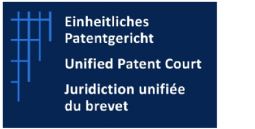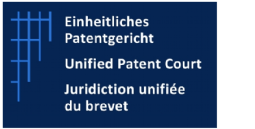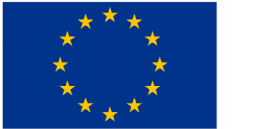This edition features updates from: the United Kingdom (UK), France, India, the Unified Patent Court (UPC) and the European Union (EU).
The Irides Weekly Update is our round-up of patent litigation news highlights from around the world. Taking its name from the plural of “iris” - a nod to the ability of Irides to see what’s happening around the world.

UK
Court of Appeal dismisses AstraZeneca’s appeal in the dapagliflozin proceedings.
As previously reported here, at first instance Deputy High Court Judge Michael Tappin KC found AstraZeneca’s (AZ) patent and corresponding SPCs to the SGLT-2 inhibitor dapagliflozin invalid for both lack of plausibility and a lack of technical contribution of the basic patent. On 16 July, Arnold LJ, with whom the other Lord Justices agreed, upheld the judgment of Dr Tappin KC at first instance and dismissed all of AZ’s grounds of appeal.
Plausibility – appeal on the interpretation of the patent
A key disclosure of the patent in suit was an assay to measure SGLT2 activity of the compounds of the invention. At first instance, the trial judge found that the disclosure of the patent did not comprise a verbal statement of an experimental result in relation to dapagliflozin and therefore the claimed inventions to dapagliflozin (or its medical use) lacked plausibility. Arnold LJ agreed.
Further, even if the skilled person considered that dapagliflozin had been tested in the assay and some degree of SGLT2 inhibition found, they would not know the level of potency and whether that potency was sufficient to confer therapeutic utility in the treatment of diabetes. Arnold LJ was not persuaded that the trial judge had erred in reaching this conclusion.
Plausibility – appeal on the standard to be applied
The law of plausibility in the UK is unchanged following this appeal.
AZ argued that the Court should depart from its decision in the Apixaban case (Sandoz v BMS), which applied the Warner-Lambert standard of plausibility to product claims, on the basis of G 2/21 and the subsequent decisions of the EPO Boards of Appeal (BoA) and national courts across Europe. It was not disputed that the Warner-Lambert Supreme Court judgment was binding on the Court in relation to second medical use claims.
Arnold LJ commented (although ultimately obiter) that, despite G2/21 aiming to reconcile the ab initio plausibility and ab initio implausibility strands of EPO case law, the distinction between the two plausibility standards is inescapable. This distinction could be decisive where the application claims a technical effect without providing either experimental data or theoretical reasoning to support the claim, but subsequent information demonstrates that the technical effect is indeed achieved. However, he found it contrary to principle to be swayed by hindsight knowledge of proof of the technical effect that is missing from a patent. On this basis, Arnold LJ held that G 2/21 alone did not justify the Court of Appeal departing from Apixaban.
In light of the diverging decisions of the EPO BoA, in particular those in T 116/18 and T 314/20, Arnold LJ considered that it is not yet possible to say that there is a settled view from the EPO BoA of how the test in G2/21 is to be interpreted and applied. On a review of the plausibility case law of national courts across Europe, Arnold LJ commented that there appeared to be an emerging consensus that speculative patents are not permitted, but little agreement as to what constitutes a speculative patent. Arnold LJ therefore concluded that there was no reason to depart from his judgment in Apixaban on the basis of these decisions or those of the EPO BoA, any more than there was based on G 2/21 itself.
However, Arnold LJ went on to hold that, even if the standard applicable when considering inventive step for a product claim is whether the skilled team would have legitimate reason to doubt that dapagliflozin would be useful for the treatment of diabetes (i.e. the test adopted in T 116/18), the patent would still lack plausibility. This was due to the Judge’s finding at first instance that structural features of phlorizin analogues (which are absent from dapagliflozin) are important for activity, and would give the skilled team reason to doubt whether dapagliflozin would be an SGLT2 inhibitor.
Arbitrary selection
An important feature of this case is that the disclosure of one piece of prior art (WO 128) was largely identical to that of the patent although it disclosed Markush formulae which encompassed dapagliflozin . Arnold LJ held that the patent made no technical contribution compared to WO 128 as dapagliflozin was not shown to be superior in any of its properties to any of the compounds disclosed in WO 128. Therefore, Arnold LJ upheld the first instance decision that the patent was also invalid for a lack of technical contribution associated with the selection of dapagliflozin from the prior disclosed Markush formulae. In doing so, Arnold LJ chose to follow the legal test set out in the leading authority of Dr Reddy’s v Eli Lilly on selection inventions rather than subsume the approach to selection patents into the overall approach to plausibility. The existing case law on arbitrary selections therefore remains good law even after Warner Lambert and G 2/21.
Consequential hearing
The Court refused AZ permission to appeal to the Supreme Court. Indicating that it was the Court’s view that AZ had no prospect of success on appeal to the Supreme Court, the Court did not grant a preliminary injunction pending substantive appeal. However, the Lord Justices exercised their discretion and continued the existing preliminary injunction for a further 14 days to give AZ the opportunity to make an urgent application to the Supreme Court for permission to appeal or a further injunction.

FRANCE
Paris Court of Appeal finds Bayer’s rivaroxaban patent invalid, confirming the Court of First Instance’s decision.
Readers will be aware of the ongoing international litigation relating to Bayer’s patent, EP 1 845 961 (EP 961). EP 961 claims a once-daily dosage regimen for Bayer’s rivaroxaban product, a factor Xa inhibitor. In March 2024, following a revocation action filed by Sandoz, the Paris Court of First Instance revoked the French designation of EP 961. In this recent judgment, the Court of Appeal confirmed the Court of First Instance’s decision.
The Court reviewed the prior art which it assessed disclosed the possible long half-life of rivaroxaban and that anti-coagulant effects may last up to 24 hours. The various items of prior art were ruled to offer consistent results of phase I clinical studies, providing information in terms of pharmacokinetics and pharmacodynamics, and safety and tolerance. The prior art was presented at prestigious conferences and was corroborated by the announcement of several phase II clinical trials, including a trial involving the administration of a daily dose of rivaroxaban to patients. Therefore, the person skilled in the art would have been prompted to consider once daily dosing of rivaroxaban as potentially effective and worthy of being tested, and would have had a reasonable expectation of success. This was particularly so given the search for an appropriate dosage is a matter for routine testing.
Bayer had asserted various prejudices that would have dissuaded the skilled person from including a once daily dose of rivaroxaban in phase II trials. The Court cited the EPO which sets out that a prejudice must be a preconception that is widely or universally held among experts in the field, and that the prejudice must be demonstrated by reference to the relevant technical literature. Proving these prejudices requires a high degree of proof. Court of Cassation case law was also cited which sets out that the Court cannot rely exclusively on an expert opinion submitted by one of the parties to prove a technical prejudice. With this context, the Court stated that the prejudices put forward by Bayer were based almost exclusively on the statements of experts appointed by Bayer (and not corroborated by other evidence), and were not of a high enough standard of evidence to establish a technical prejudice of such a kind which would dissuade a person skilled in the art.

INDIA
Delhi High Court orders Lava to pay $2.3m security deposit in SEP dispute.
This decision concerns whether the Delhi High Court should grant a pro tem security order against Lava, requiring it to deposit a substantial sum of money into Court as a condition for continuing to sell its Android smartphones and tablets, pending a final determination of FRAND (Fair, Reasonable and Non-Discriminatory) licence terms at trial. Dolby alleged that Lava’s Android devices, which implemented the AAC standard, infringe its Indian patents asserted to be standard essential.
The dispute involved eight patents from Dolby’s AAC portfolio. Three were in force and five expired at the time of suit. Dolby claimed to have acted as a willing licensor, negotiating with Lava since 2018, providing claim charts and FRAND offers. However, Lava did not make any counteroffer for over five years, nor challenge validity or essentiality before litigation, and continued selling Android devices without a licence or royalty payments. Lava also insisted on access to Dolby’s confidential third-party licence agreements before making any counter-offer.
When the suit was filed, Lava argued that no security should be paid for expired patents and any security should only cover devices sold after the suit began.
The Court explained that pro tem security orders in SEP/FRAND cases are interim measures to prevent implementers from avoiding payments while litigation is pending, and may be granted on a strong prima facie case establishing validity, essentiality and infringement of the patents in suit. The Court found Dolby had engaged in good faith, providing claim charts and entering over 940 global licences, with its mapping to the AAC standard unrebutted by Lava. Lava’s failure to engage substantively was characterised as classic “patent holdout” behaviour.
The Court also specifically considered Lava’s financial condition in determining whether to order a security deposit. It noted that documents placed on record, including an outstanding judgment of approximately INR 300 crore against Lava and evidence of ongoing investigations, raised real concerns about Lava’s ability to satisfy a future damages award. The Court concluded there was a genuine risk that, without a security deposit, Dolby could be left with a paper decree if it ultimately succeeded at trial.
Finally, similar prior cases against Vivo and OPPO involving Dolby’s AAC patents supported Dolby’s case. In these cases, the Indian court had ordered deposits of INR 20 per device pending final resolution of FRAND terms, and the parties had ultimately agreed global licences.
The Court ordered Lava to deposit INR 20,08,06,293.92 (approx. USD 2.34 million) into court as security for devices sold after the suit was filed. This amount was calculated based on the number of infringing Android devices Lava sold during the pendency of the litigation, multiplied by a per-device royalty rate of INR 20, which was similar to the rates offered to similar situated licensees in the Dolby licence agreements filed with the court. This sum will be held pending final determination of FRAND terms and the patent issues at trial.
This decision reinforces the willingness of Indian courts to grant pro tem security orders in SEP/FRAND cases where a party is found to be an unwilling licensee and that equity demands protection for the SEP holder’s rights during lengthy litigation. The judgment clarifies that there is no general right for implementers to access confidential third-party licence agreements as a precondition to engagement, and that the threshold for a pro tem security order is a strong prima facie case as to validity, essentiality, and infringement, taking into account factors such as the parties’ conduct, the existence of comparable licences, prior judicial findings and the defendant’s financial position.

UK
IPO Launch Consultation on Standard Essential Patents.
The UK Intellectual Property Office (IPO) has launched a new consultation on Standard Essential Patents (SEPs). The consultation (available to view here) puts forward a number of proposals (with 47 associated questions) for potential measures to improve SEP licensing.
Measures to improve the efficiency and transparency of SEP licensing include a proposal for a new Rate Determination Track (RDT) in the existing Intellectual Property Enterprise Court (IPEC). Such a procedure is said to be "a simpler and more efficient approach to proceedings to determine the correct licence rate". Further, a new IPO search service is being proposed, whereby users can search for patents that relate to technical standards (similar to the way users can currently search for Supplementary Protection Certificates).
Other potential measures for improving SEP licensing and dispute resolution include a specialist SEP pre-action protocol in order to reduce information asymmetry in licensing disputes and a possible essentiality review mechanism at the IPO.
The IPO is also seeking input on the use of legal remedies, alternative dispute resolution services and other non-regulatory measures.
All stakeholders are invited to share their views in this consultation before the deadline on 7 October 2025.

UPC
Fujifilm ordered to reimburse Kodak large proportion of costs.
[UPC_CFI_355/2023 and UPC_CFI_186/2025]
On 9 July 2025, the Düsseldorf Local Division issued a significant costs decision in the dispute between Fujifilm Corporation and several Kodak entities concerning EP 3 594 009 B1. Following an earlier ruling on 28 January 2025, which revoked Fujifilm’s patent in its entirety and dismissed its infringement claims, Fujifilm was ordered to bear the costs of both the infringement and revocation proceedings. The value in dispute was set at €15 million for each action, with a ceiling for recoverable costs fixed at €1.5 million (reflecting a 25% uplift on the default ceiling).
Perhaps the most notable aspect of the latest decision is the Court’s clear stance that parties cannot recover legal costs specifically incurred in relation to the costs of proceedings themselves. The Court underlined that applications for costs under r. 150 et seq. RoP are intended to be summary proceedings determined by the judge-rapporteur. Allowing “costs upon costs” would undermine this purpose, so a successful party must ordinarily bear its own costs for the costs process, except in exceptional circumstances where a party has caused unnecessary costs.
Other notable points from the decision include:
- To be eligible for reimbursement, costs must be both reasonable and appropriate. The Court interpreted ‘reasonable’ as objectively necessary for achieving the legitimate aim of the proceedings; and ‘appropriate’ as not disproportionate in light of the value in dispute, the significance, complexity, and prospects of the case.
- The Court accepted the complexity of the dispute and found that Kodak’s use of a large legal team was justified. The €1.5 million ceiling for recoverable costs, agreed during the oral hearing and left unchallenged thereafter, was confirmed to apply, and Fujifilm’s objections to the increased ceiling were dismissed as unfounded.
- Travel expenses for two Kodak representatives to attend hearings, as well as fees for an appointed scientific expert, were considered reasonable and eligible for reimbursement. However, costs relating to additional “experts” or attorneys acting as experts, and fees for UK barristers, were disallowed, particularly as Kodak already had multiple UK solicitors as representatives, and there were no concurrent UK proceedings.
- Travel costs for a preparatory meeting were partially reduced, as the meeting coincided with other activities deemed unreasonable for reimbursement.
The Court ordered Fujifilm to reimburse Kodak’s legal costs (the final figure is redacted) within three weeks of service of the decision.

UPC
Mannheim Local Division orders personal service on Legal Counsel following refusal to acknowledge receipt of AASI.
[UPC_CFI_445/2025]
As part of an ongoing dispute between the parties over InterDigital’s standard essential patents, InterDigital applied for an anti-anti-suit injunction (AASI) in the UPC, previously reported here. The AASI was pursued in response to the anti-suit injunction (ASI) sought by Walt Disney from the United States District Court for the Central District of California in relation to the proceedings brought by InterDigital in Brazil. In its application, InterDigital explained (and the Court agreed) that there was a risk that Disney may also apply for an ASI to prevent the main proceedings conducted before the UPC. The order for the AASI was issued on 27 May 2025 as separate proceedings to the main case between the parties. Due to the urgent nature of the order, InterDigital’s representatives were ordered to serve Walt Disney’s representatives in the main UPC proceedings via “beA” a special electronic mailbox for lawyer to lawyer communications.
Following this, Disney’s representatives in the main UPC action refused to acknowledge receipt of the order on the basis that they had only been made aware of the AASI on an informal basis and were not yet instructed to act for Disney in the AASI proceedings. However, at the same time Disney’s representatives stated in the main UPC proceedings that they had been informed by their clients that they would not be seeking revocation of the AASI under r. 213.1 RoP as it was never their client’s intention to apply for an ASI in relation to the UPC proceedings.
On 20 June, the Mannheim Local Division issued an order stating that, in its preliminary view, the appointment by Disney of the representatives in the main proceedings was sufficient for them to be considered as Disney’s representatives in the associated AASI proceedings (which were primarily concerned with shielding the main proceedings). It was noted by the judge that Disney’s refusal to accept service may be considered in the main proceedings with regard to Disney’s willingness to enter into a licence.
In a further order of 9 July 2025, it was again confirmed by the Court that “defendants cannot limit the authorisation to conduct the legal dispute before the UPC to individual acts at the defendants' discretion” and that limits on a power of attorney made for tactical procedural reasons are invalid. It was noted that the AASI application and main proceedings were inextricably linked and a respondent’s representation should not be affected by whether an AASI application is made in the main proceedings pursuant to r. 206 RoP or in a separate application. The Court held that service had been effected and that the defendants’ representatives should submit their acknowledgement of receipt. The Court also ordered that, in the event of further disobedience, a penalty payment of €100,000 would be imposed.

UPC
Additional panel approved for the UPC Court of Appeal to deal with high workload.
The UPC Administrative Committee has approved the addition of three further judges to form an additional panel of the Court of Appeal, meaning the Court of Appeal will now have three panels. The expansion is as a result of the Court of Appeal’s increased workload. The identity of the three new judges has not yet been announced.

EU
European Commission issues informal guidance endorsing Automotive Licensing Negotiation Group.
On 9 July 2025, the European Commission (EC) issued informal guidance (aka a ‘comfort letter’) that the creation of a Licensing Negotiation Group (LNG) in the automotive sector will, provided certain conditions are met, not conflict with the Art. 101 TFEU prohibition on anti-competitive agreements.
LNGs are industry groups or associations which negotiate licences on behalf of a group of licensees; in this case, the group comprises a number of automotive companies which require access to Standard Essential Patents (SEPs) due to their use of essential telecommunications technology in cars.
The guidance letter mirrors the June 2024 decision of the German Federal Cartel Office to endorse an Automotive LNG (ALNG) with the same members and confirms that the ALNG will not raise concerns under art. 101, provided the following safeguards apply:
- The standards for which the ALNG negotiates licences must be relevant beyond the automotive sector such that the combined market share of the ALNG members does not exceed 15% of the total demand for the relevant SEPs – notably this is assessed across all demand for SEPs, rather than being considered on an industry-by-industry basis;
- The ALNG must be open to other interested manufacturers and suppliers in the automotive industry, up to the 15% cap;
- SEP holders must be able to enter and terminate negotiations with the ALNG on a voluntary basis; and
- Information exchange between the ALNG members must be limited to that which is objectively necessary for the purpose of the joint licensing negotiations, and must not involve the sharing of commercially sensitive information.
The EC also found that the ALNG aims to increase efficiency in the licensing of SEPs related to digital technologies, which is expected to contribute to Europe's decarbonisation and net-zero goals under the Clean Industrial Deal as well as the recently published Industrial Action Plan for the European automotive sector, which will involve an urgent transition towards “software-enabled, AI-powered connected and autonomous vehicles”, which will rely on access to SEPs.
The ALNG guidance letter, together with a second letter regarding a joint purchasing agreement in a different context released on the same date, are the first ‘comfort letters’ the EC has issued under the revised Informal Guidance Notice adopted in 2022, which increases the scope of the informal guidance tool. By comparison, no informal guidance was provided under the stricter Notice in place from 2004-2020.
Both the EC and the CMA have signalled that they are considering issuing guidance on LNGs in the context of forthcoming reviews of the Technology Transfer Guidelines and Assimilated Transfer Technology Block Exemption respectively, so we may soon see more on their compatibility with competition law. Our fuller update on the ALNG guidance letter is available here, and the EC’s press release here. A non-confidential version of the guidance letter will be published in due course.

/Passle/5f3d6e345354880e28b1fb63/MediaLibrary/Images/2025-09-29-13-48-10-128-68da8e1af6347a2c4b96de4e.png)
/Passle/5f3d6e345354880e28b1fb63/SearchServiceImages/2025-12-23-10-01-04-004-694a6860001b94fa0352717d.jpg)
/Passle/5f3d6e345354880e28b1fb63/MediaLibrary/Images/2024-08-23-11-31-07-354-66c872fb971eecc249d83d40.png)
/Passle/5f3d6e345354880e28b1fb63/MediaLibrary/Images/2025-07-10-13-52-35-189-686fc5a39f23a993118ba1a0.png)